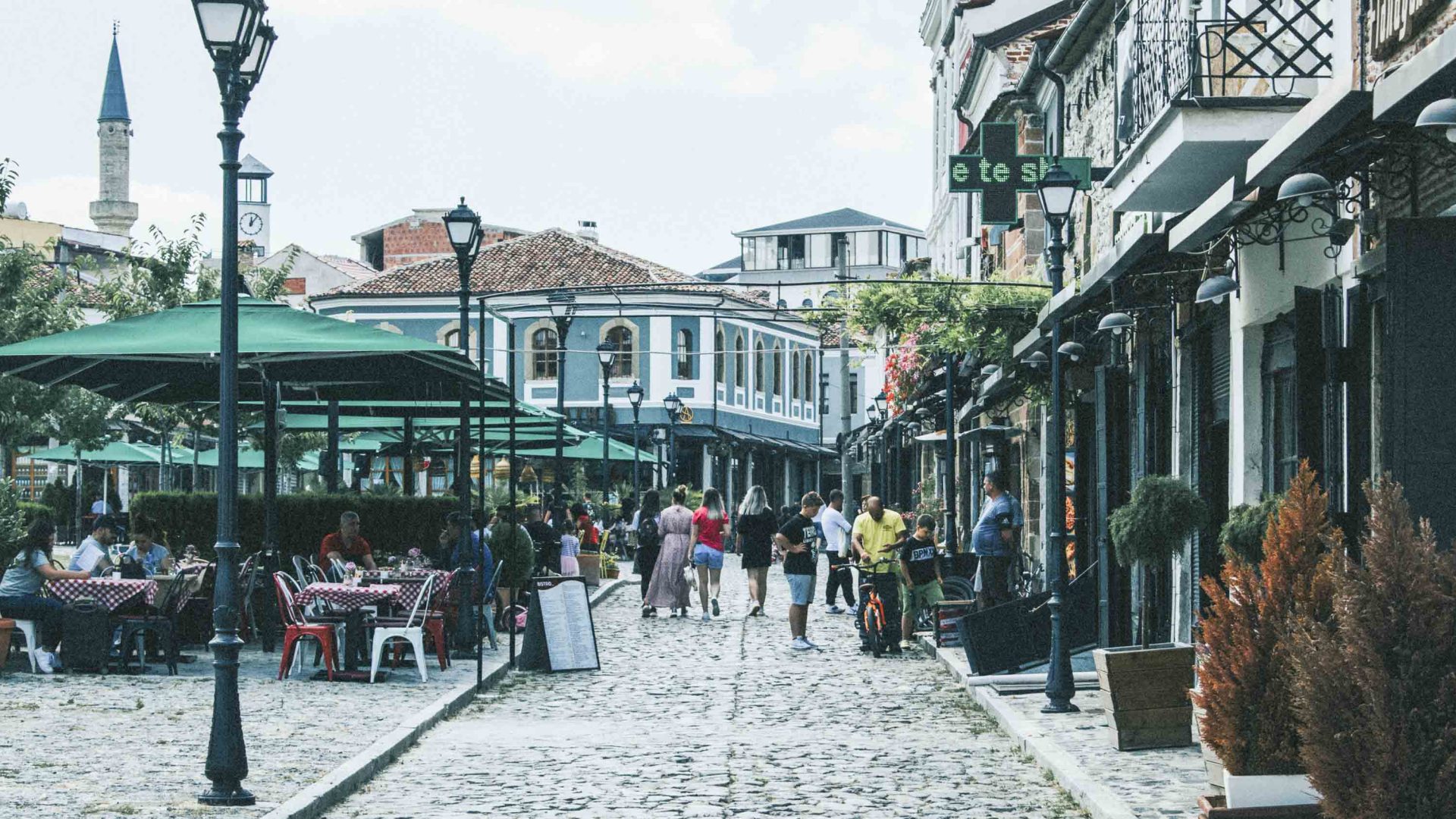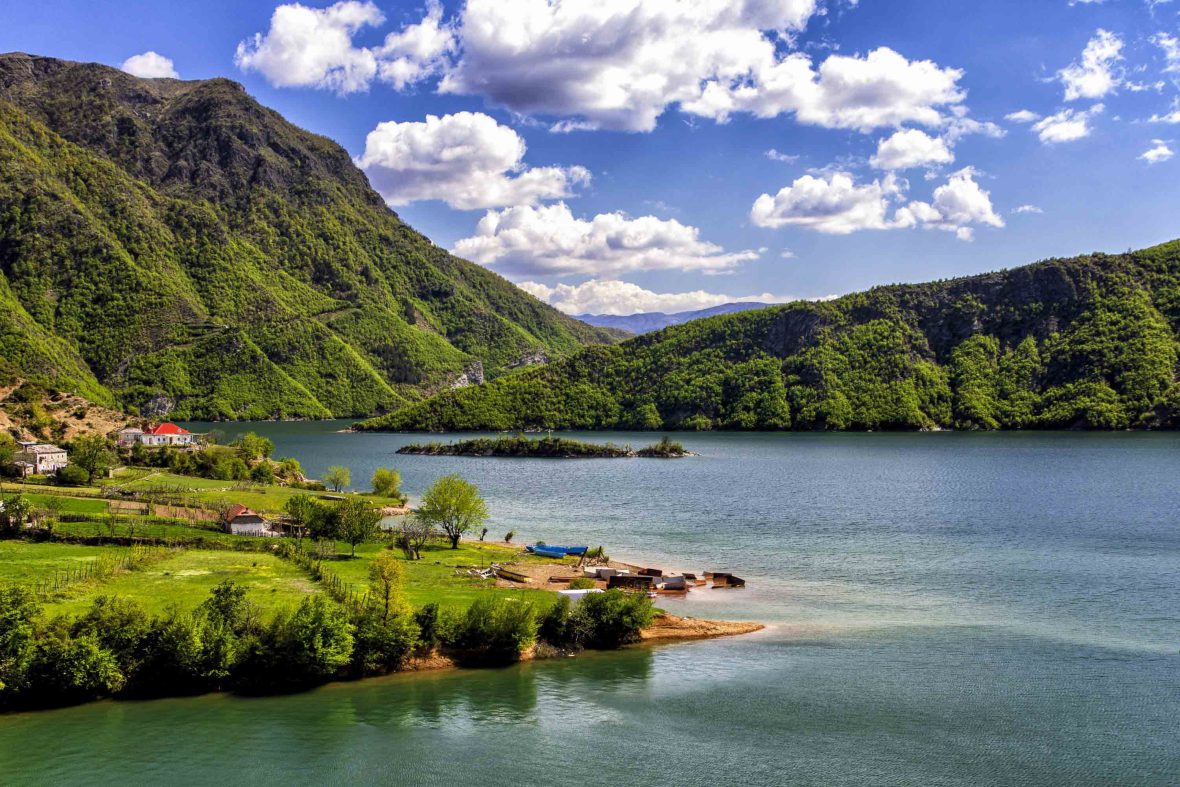
Despite its spectacular landscapes and increased profile, Albania remains one of Europe’s least visited countries. With young people leaving the country in droves, could tourism be part of the solution to revive this nation’s economy?


Despite its spectacular landscapes and increased profile, Albania remains one of Europe’s least visited countries. With young people leaving the country in droves, could tourism be part of the solution to revive this nation’s economy?
It has been more than 30 years since Albania opened its doors to tourists, but telling a friend that you’re off to Tirana or Dhërmi for a long weekend might still raise some eyebrows.
Despite Albania making Lonely Planet’s 2023 best in travel list, and various travel specialists referring to the country as the Mediterranean’s “hidden gem” because of its pristine coastline and wildlife, Albania remains one of the least visited countries in Europe.
Despite its small size, Albania’s varied landscape offers an array of touristic opportunities. Its Adriatic coastline is home to beautiful beaches, not yet spoilt by hordes of visitors.
The interior of the country is wild and mountainous, boasting 15 national parks, picturesque remote villages and breathtaking alpine scenery. At the crossroads of various Mediterranean, Balkan and Ottoman empires, as well as having a history of communist rule, Albanian culture is a mixture of European and Middle Eastern influences, which remains evident in its cuisine and architecture.
So could tourism be an economic savior for Albania and mediate the migration of its young people?

Although visitor numbers are on the rise, the country is facing economic difficulties. There are now “ghost towns” throughout the country. Kukësi in the north of Albania has seen more than 53 percent of its citizens leave, with reports showing that young people feel there are few opportunities for them.
According to a 2021 Gallup poll, 50 percent of Albanian adults wanted to move abroad, with unemployment, low wages and lack of opportunities being listed as main reasons.
In 2022, the United Nations Development Programme assessed Albania’s tourism trends and performance, finding that mass emigration is a significant challenge to the country’s tourism development. Around 75 percent of the hotels polled claimed that in peak season they would need at least 35 percent more employees than they are currently able to find.
Industry professionals in Albania feel that infrastructure, waste management and transport links are not at the level required to attract a large number of tourists.
Many countries have used tourism for economic development. After the Second World War, tourism became a crucial way for many poorer Mediterranean countries to kickstart their economies.
In 1951, the Greek National Tourism Organization embarked on a nationwide development initiative to construct tourist facilities across the country, the Xenia project. Renowned Greek architect Aris Konstantinidis was enlisted to design dozens of hotels, bars, souvenir shops and other attractions across the country, in the minimalist whitewashed style Greece is renowned for.
Greece’s image was transformed into a hub for international travelers. At the start of the project, Greece hosted just 33,000 tourists a year—by the 1960s, that figure had increased by 1,098 percent. Today, tourism accounts for one-fifth of its economy.
While mass tourism can bring tourists, new hotels and restaurants, if developments are not locally owned the financial rewards may have limited benefit to the local economy, although they still provide jobs.
A similar strategy was used in Spain. An impoverished, isolated state at the end of the second world war, tourism transformed the Spanish economy. Not only did tourism provide an invaluable source of foreign currency, but the sudden influx of foreign visitors undermined the Franco regime’s grip on the country.
The arrival of international visitors sparked a cultural transformation, as ordinary Spaniards interacted with tourists they began to question and challenge the authoritarian control of Franco’s government. The introduction of tourism is often cited as the catalyst to the toppling of the authoritarian regime.
A growth in Albania’s tourism might offer young people alternative opportunities to those they seek by leaving their home nation. Travel and tourism employ more young people (14- to 25-year-olds) than any other sector, according to a World Travel and Tourism Council study.
And in tourism-dependent countries, jobs tend to become full-time and permanent, appealing to people looking for financial stability.
Albania has many of the elements required to become a successful tourist destination. It’s a beautiful country with good food and a wonderful summer climate. In 2022, a TikTok trend sparked a boom in tourist bookings after people posted images of its stunning beaches.
But there are some challenges. For small and underdeveloped destinations like Albania, which may not have the infrastructure required to extensively develop tourism alone, help from outside investors is necessary—and that can come with its own issues.
While mass tourism can bring tourists, new hotels and restaurants, if developments are not locally owned the financial rewards may have limited benefit to the local economy, although they still provide jobs.
The World Travel and Tourism Council found that the Caribbean’s tourism sector suffered from economic leakage of 27.5 percent in 2019. Journalist Polly Pattullo said that on some islands this figure could be as high as 90 percent.
This means that this tourism-generated revenue leaves the Caribbean and does not contribute to the economy, due to hotels and tour operators being owned and controlled by foreign companies.

Perhaps Albania could take inspiration from neighboring Montenegro, which seems to be successfully welcoming tourism. Like Albania, it is not a member of the EU, and has struggled with economic development.
The country has positioned itself as a niche destination. Tourism now accounts for around 25 percent of Montenegro’s GDP (compared to around 8 percent in Albania).
Albania has a falling birthrate and a struggling economy. For decades, the country sealed its population inside its borders, but these days many young people are desperate to leave. But an improvement in economic prosperity and jobs in the tourism industry might be a significant factor in changing that, if managed well.![]()
**
This article is republished from The Conversation under a Creative Commons license. Read the original article.
***
Adventure.com strives to be a low-emissions publication, and we are working to reduce our carbon emissions where possible. Emissions generated by the movements of our staff and contributors are carbon offset through our parent company, Intrepid. You can visit our sustainability page and read our Contributor Impact Guidelines for more information. While we take our commitment to people and planet seriously, we acknowledge that we still have plenty of work to do, and we welcome all feedback and suggestions from our readers. You can contact us anytime at hello@adventure.com. Please allow up to one week for a response.

Ross Bennett-Cook is a guest lecturer in the School of Architecture + Cities, University of Westminster, and a PhD candidate at Leeds Beckett University specializing in the anthropology of tourism. He is currently researching tourist spaces (resorts) and how they are used by domestic and international visitors, the impacts of tourism on societies and cultures, and relationships between tourists and hosts. His PhD research explores Turkish tourist resorts as places of escapism and refuge.






Can't find what you're looking for? Try using these tags: